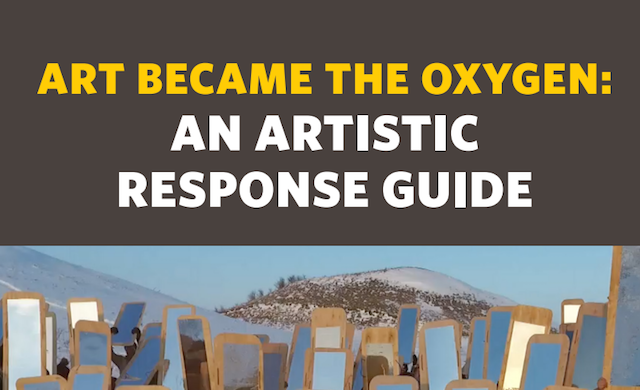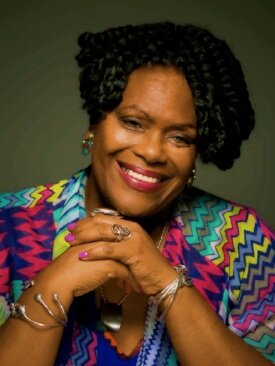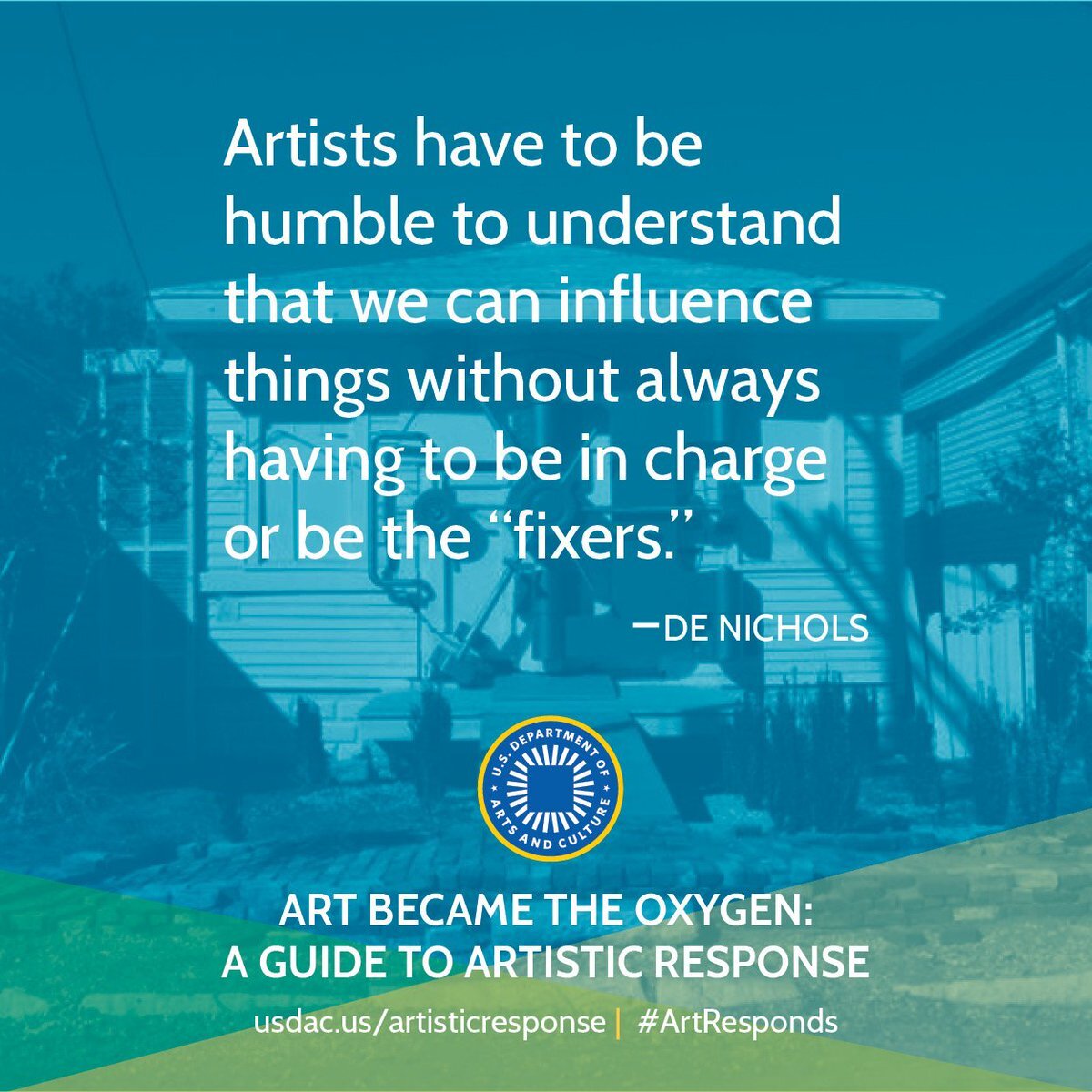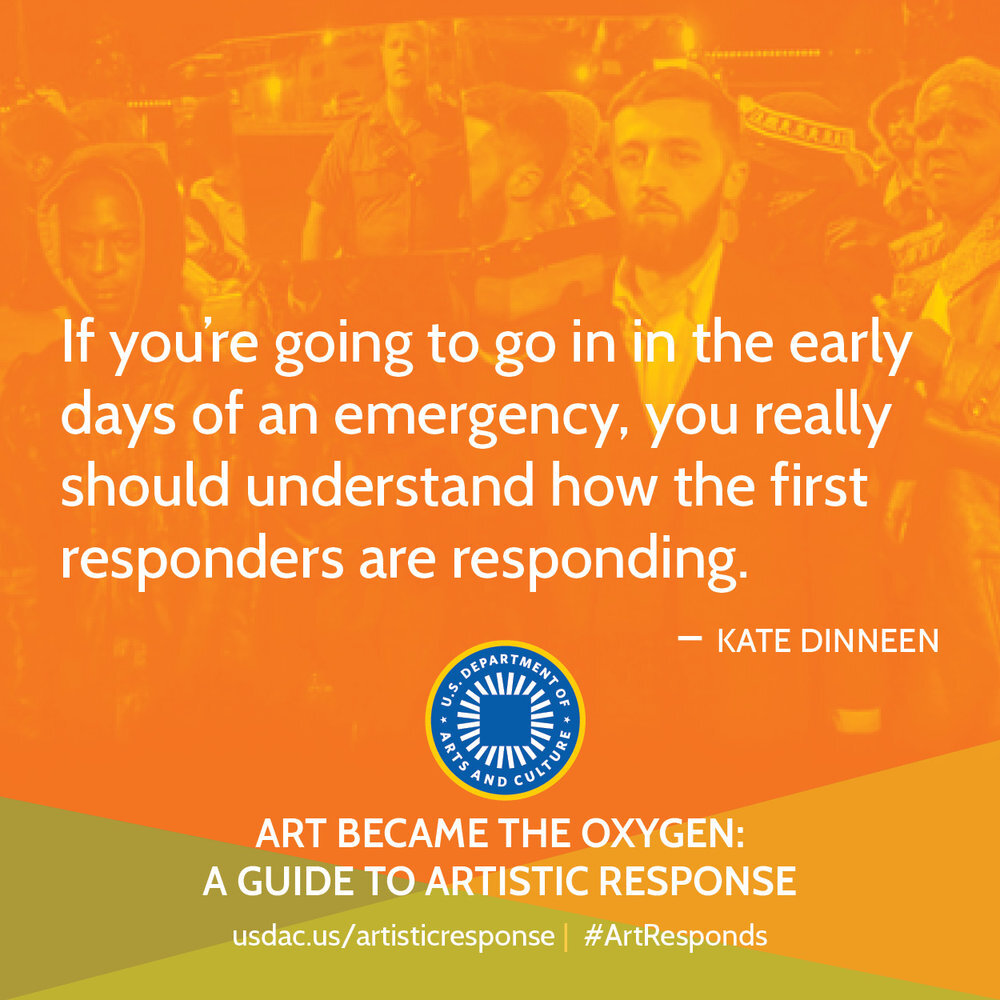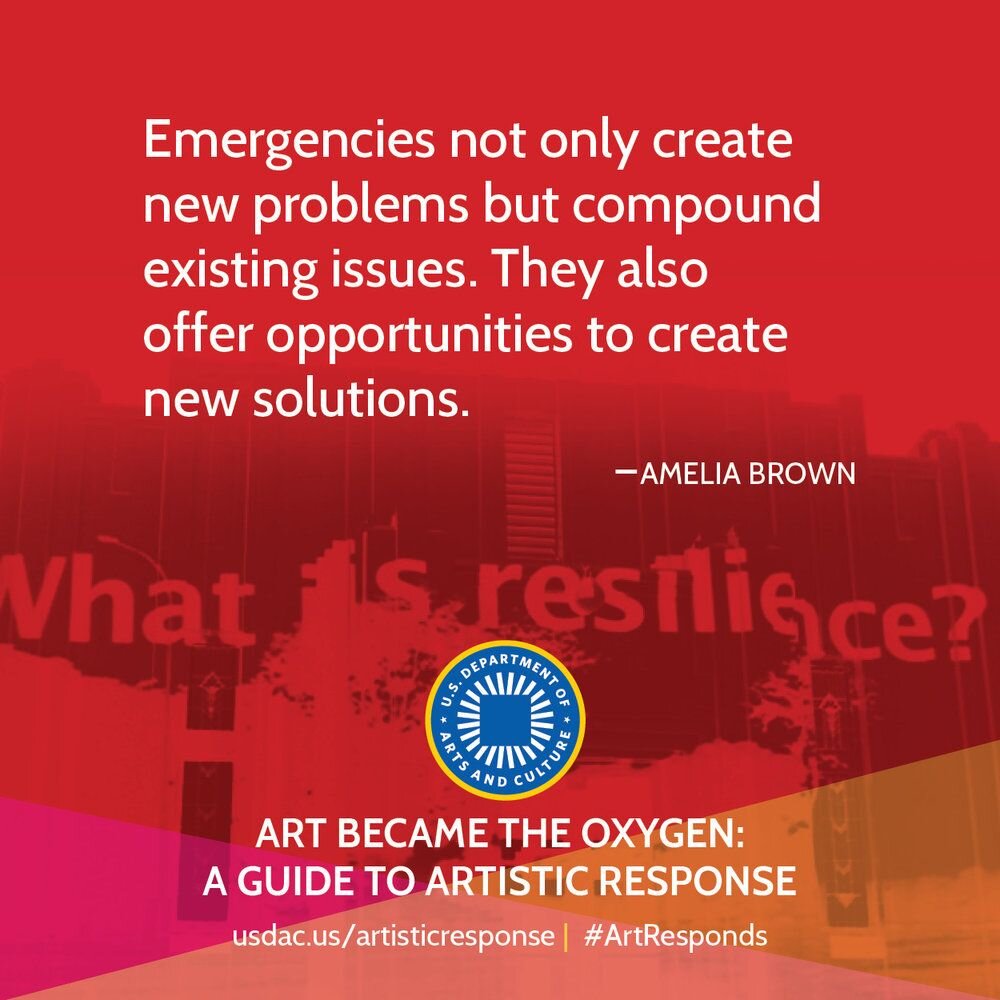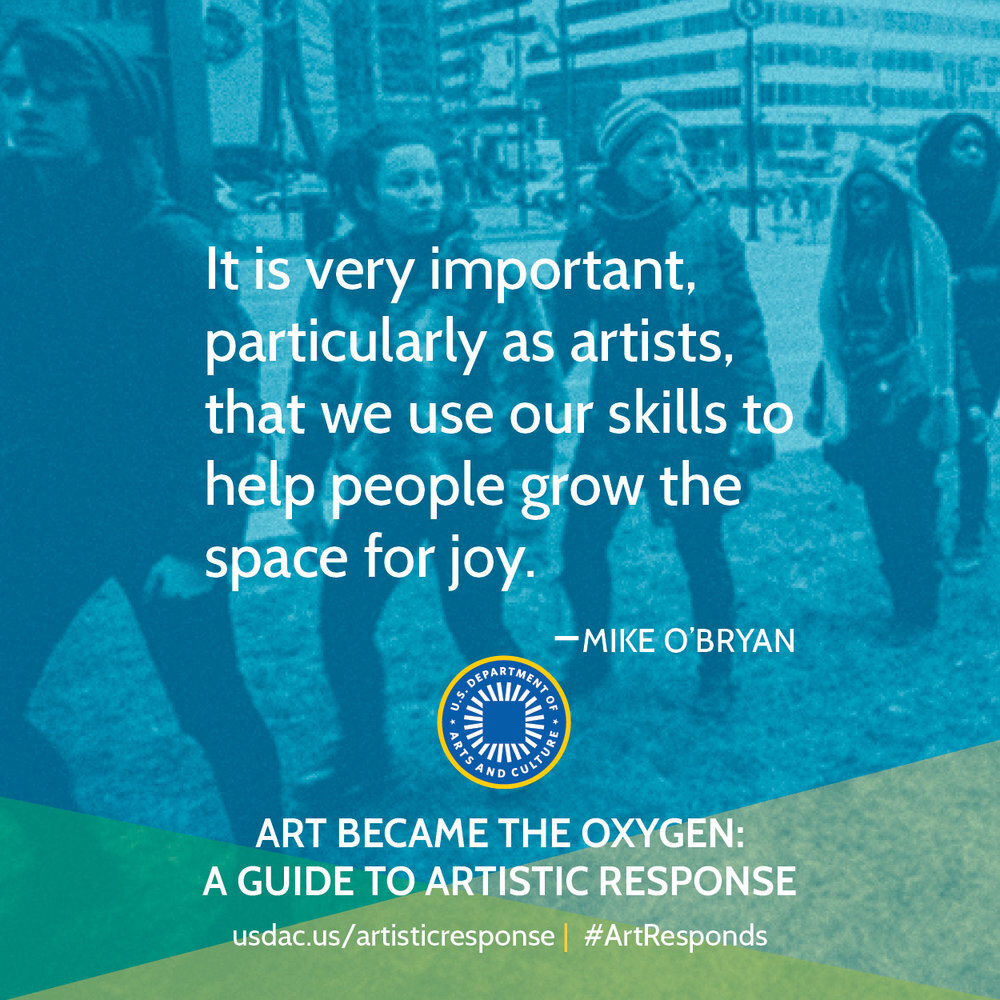A Guide for Artists, Emergency Management Agencies, Funders, Policy-Makers,
and Communities Responding to Natural and Civil Emergencies
Successful grassroots movements thrive on collaboration, solidarity, and amplification. Today, Statera is re-sharing an incredible resource published by The U.S. Department of Arts and Culture called Arts Became the Oxygen: An Artistic Response Guide. The free, downloadable, 74-page booklet is an excellent resource for artists who are looking for creative ways to respond to current events.
As natural disasters and social emergencies multiply, the need has grown for ethical, creative, and effective artistic response. The title of the guide was taken from an interview with Carol Bebelle, Co-founder of the Ashé Cultural Arts Center in New Orleans.
Carol Bebelle, Co-Founder of the Ashé Cultural Arts Center
The quote below is about Ashé’s experience after Hurricane Katrina in 2005, when people returned to the city seven or eight weeks after the storm:
“People needed something magical to help them feel better enough to face the next day. Every day was a reminder of irreversible loss . . . So we had art as a healing force: music, the opportunity for people to be together and to find creative ways in which to interact. This became the work that we did. There are so many things that anchor our existence. To lose them all leaves us on a sea without an anchor. So people were dealing with identity issues. They were dealing with disenfranchisement issues, they were dealing with homesickness. They were dealing with loss in a huge fashion. What we really came to appreciate was the necessity to get some air in the room first before you try and do something else, to get them some oxygen so that they can start breathing. So art became the oxygen.”
Art Became the Oxygen was created to engage three categories of readers who share the intention of offering care and compassion and helping to create possibility in the midst or wake of crisis:
Artists who wish to use their gifts for healing, whether in the immediate aftermath of a crisis or during the months and years that follow.
Resource-providers—both public and private grantmakers and individual donors—who care about compassion and community-building.
Disaster agencies, first responders, and service organizations on call and on duty when an emergency occurs, and those committed to helping over time to heal the damage done.
Most of the work featured in the USDAC’s Guide was created in collaboration with community members directly affected by crisis. Most of it pursues one or more of three main objectives: offering comfort, care, or connection in the immediate wake of a crisis; creating powerful images and experiences that amplify and focus protest, penetrating the media and public awareness; and engaging those affected by a crisis in creative practices over time that help them reframe and integrate their experience, building resilience and strengthening social fabric.
Art Became The Oxygen incorporates first-person experience and guidance from respected voices deeply engaged in artistic response from Katrina to Ferguson, from Sandy to Standing Rock. It includes hundreds of links to powerful arts projects, official emergency resources, and detailed accounts for those who want to go even deeper.
The USDAC has also published a guide called Art & Well-Being, that serves as a great companion for Art Became the Oxygen. Art & Well-Being, authored by Arlene Goldbard, is for everyone who wishes to bring about this shift in our culture of health. The USDAC published this guide for Citizen Artists who place their gifts at the service of healing, working for both individual and collective well-being, for those who recognize social justice as the foundation of a culture of health. And for medical practitioners, funders, and policymakers who want to understand the critical importance of arts-based interventions.
Learn more about the USDAC here >>>
_format-1500w.png)
